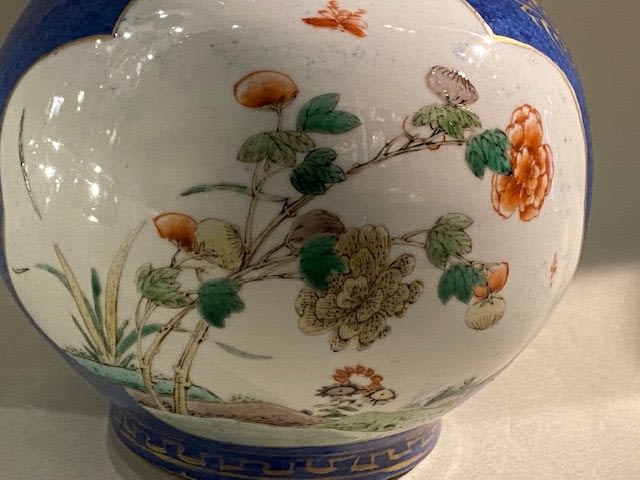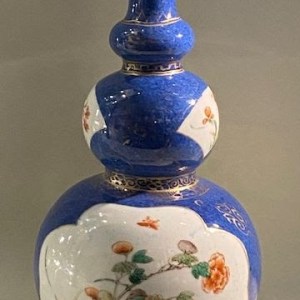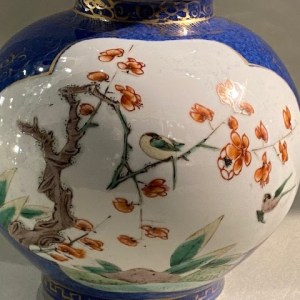BH34
Further images
Provenance
Acquired from W. Waddingham of Mount Street, London and Royal Parade, Harrogate, 31st December 1965.Literature
For a very similar example see, Christiaan J.A. Jörg, 'Famille Verte - Chinese Porcelain in Green Enamels', Groninger Museum, 2011, pl. 105, Jörg writes how: "In Europe, the stacked bulbous shapes appealed to the Baroque taste.
For similar shaped vases but in blue and white, see the 1721 Inventory of the Augustus the Strong collection, where they are catalogued as '6 stk bouteillen mit drei Bauchen' (six bottles with three bellies). Four of these vases are in the collection at the Zwinger Museum, Dresden.
Christiaan J.A. Jörg, in 'Chinese Ceramics in the Collection of the Rijksmuseum, Amsterdam', Rijksmuseum, Amsterdam, 1997, pl. 180, pp. 164-165. Jörg discusses discusses the shape of triple gourd vases - known as knobbelfles, or 'bulb bottles' in Dutch.
In China, there is a long tradition of gourd bottles, often associated with Daoist magic. They were used to store elixirs, and the vapours rising from an open gourd flask could be used to catch demons. The Immortal Li Tieh-kuai carries a double-gourd bottle as one of his emblems."






